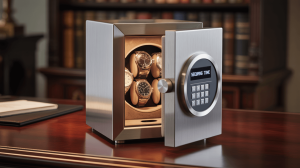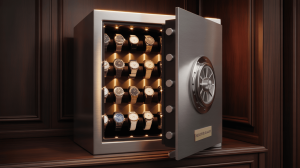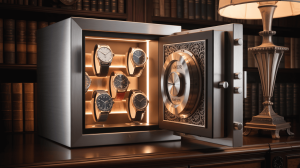For professional watch dealers and collectors, protecting high-value timepieces requires more than just a locked box. But here’s what most people miss—a true watch safe combines bank-level security with museum-grade preservation. This comprehensive guide reveals exactly what B2B buyers need to know when selecting professional watch storage solutions.
1. What Makes a Truly Premium Watch Safe?
You might assume all safes offer similar protection, but here’s the shocking reality: standard commercial safes can actually damage luxury watches over time. A premium watch safe requires three non-negotiable elements that go far beyond basic security.
First is precision climate control. The ideal environment maintains 45–55% relative humidity and a stable 20–22°C temperature. Without this, watch movements develop corrosion, and dials warp or develop moisture spots.
Second is vibration management. Automatic watches left stationary stop running, while poor-quality winders overwind them. Advanced safes feature programmable winders with customizable rotation settings tailored to different mechanisms.
Third is professional-grade security. Modern solutions include biometric access, tamper alerts, and GPS tracking.
Here’s how professional safes compare to commercial models:
| Feature | Commercial Safe | Professional Watch Safe |
|---|---|---|
| Humidity Control | None | Digital precision (±2% RH) |
| Security | Basic key lock | Biometric + emergency key |
| Movement Protection | None | Programmable winders |
| Warranty | 1 year limited | Lifetime on mechanism |
2. How Does Proper Storage Impact Watch Value?
You wouldn’t store rare wine in a kitchen cabinet, so why risk six-figure watches in inferior storage? Consider these documented impacts from the horology industry:
A 2023 study found watches stored improperly lose 17–23% of their value within two years. Humidity damage (42%), scratches (31%), and magnetism (19%) are primary culprits.
For dealers, this translates to profit loss. Take SwissTime Distributors—after upgrading to professional safes, their resale values improved by 15%, and customer returns dropped 28%.
But here’s the kicker: premium safes become a selling feature. When buyers see your storage system, they trust your inventory quality instantly.
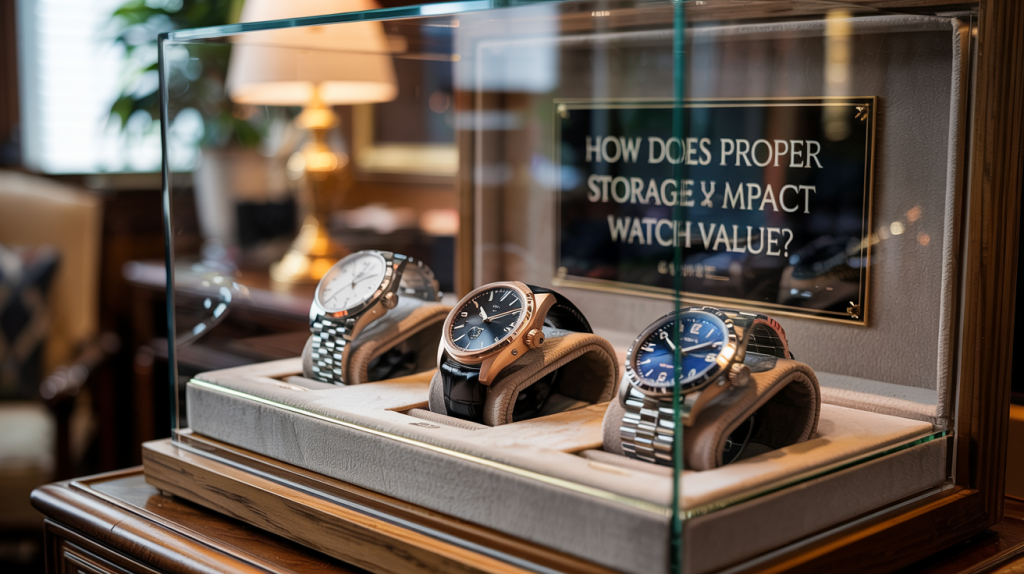
3. What Security Features Truly Matter Today?
Thick steel alone won’t stop modern thieves. Real security comes from layered defenses:
- Multi-point locking systems using drill-resistant alloys.
- Silent alarms that notify you without alerting intruders.
- Fireproof insulation rated to 1200°C for 60+ minutes.
- GPS tracking with cellular backup.
4. Climate Control: Why It’s Non-Negotiable
Ever opened a safe to find foggy crystals on your watch glass? That’s humidity damage in action. Professional systems use:
- Electric dehumidifiers with precision sensors.
- Digital hygrometers for real-time monitoring.
- Automatic ventilation cycles.
- Backup power for uninterrupted protection.
5. Customization Options for Professional Use
Here’s the game-changer: manufacturers now offer complete customization. You can specify:
- Branded exteriors with your logo.
- Interior layouts sized for specific models.
- Integrated inventory management systems.
- Special finishes matching your showroom decor.
| Customization Option | Business Benefit |
|---|---|
| Branded Exteriors | Enhances brand visibility |
| Modular Interiors | Adapts to inventory changes |
| Inventory Integration | Streamlines stock management |
6. The Science Behind Watch Winding Mechanisms
Not all winders are equal. Premium safes feature programmable winders with:
- Custom rotation directions (clockwise, counterclockwise, bidirectional).
- Adjustable turns per day (650–1,200).
- Quiet operation below 20 decibels.
For example, a Patek Philippe Grand Complication requires specific winding patterns. Generic winders could cost thousands in servicing fees.

7. Material Innovation in Professional Safes
| Material | Standard Grade | Professional Grade |
|---|---|---|
| Steel Thickness | 2–3mm | 6–10mm military grade |
| Locking Bolts | 4–6 standard | 12+ drill-resistant |
| Fireproofing | 30-minute rating | 60–120-minute rating |
| Interior Lining | Basic felt | Anti-static microfiber |
8. Smart Technology Integration
Modern safes offer connectivity features like:
- Remote monitoring via smartphone apps.
- Access logs showing who opened the safe.
- Environmental condition tracking.
- Maintenance alerts.
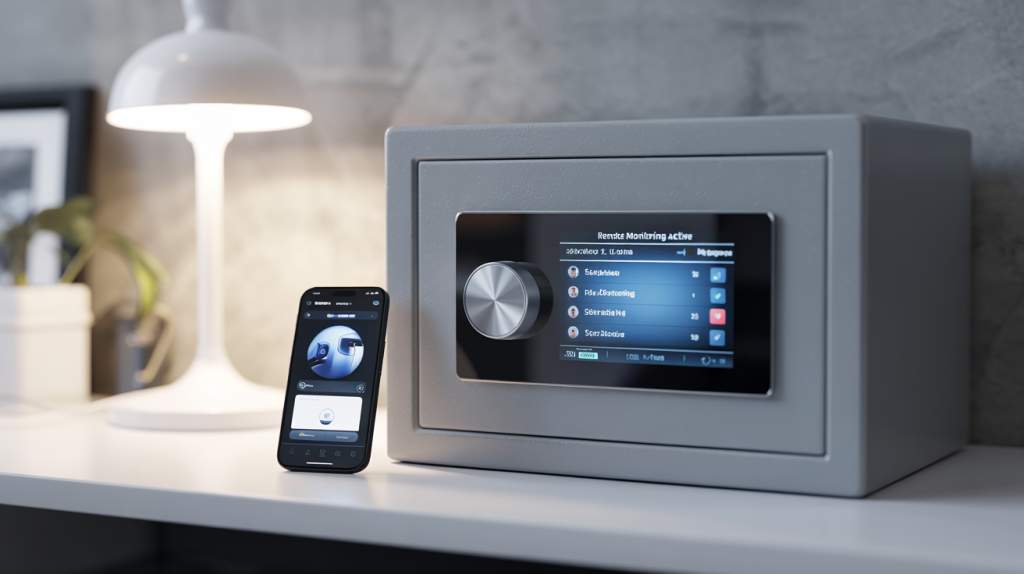
9. Display Solutions for Retail Environments
For dealers showcasing inventory, consider:
- LED lighting with UV filters to prevent dial fading.
- Anti-reflective glass for clear visibility.
- Rotating platforms to highlight timepieces.
10. Transportation and Installation Best Practices
Here’s what professionals overlook:
- Door clearance requirements for large safes.
- Weight distribution to prevent floor damage.
- Climate calibration post-installation.
Conclusion
Investing in professional watch safes delivers measurable returns: better preservation, enhanced security, and improved customer trust. Prioritize climate control, layered security, and customization to protect your assets and reputation.
The right safe isn’t just storage—it’s a business-critical tool that safeguards your inventory and boosts profitability.

FAQ Section
Q1: What’s the minimum safe size for small dealerships?
A 20-watch capacity balances space efficiency and growth potential.
Q2: How often should safes be serviced?
Annual checks are recommended, with semi-annual inspections for high-volume users.
Q3: Are fireproof safes heavier?
Yes, but modern composites add only 20–30% extra weight.
Q4: Can safes be anchored securely?
Professional installation includes reinforced anchoring for all floor types.
Q5: What’s the power requirement for climate control?
Most units use 110V/220V power (150–200W) with 8–12-hour battery backup.


